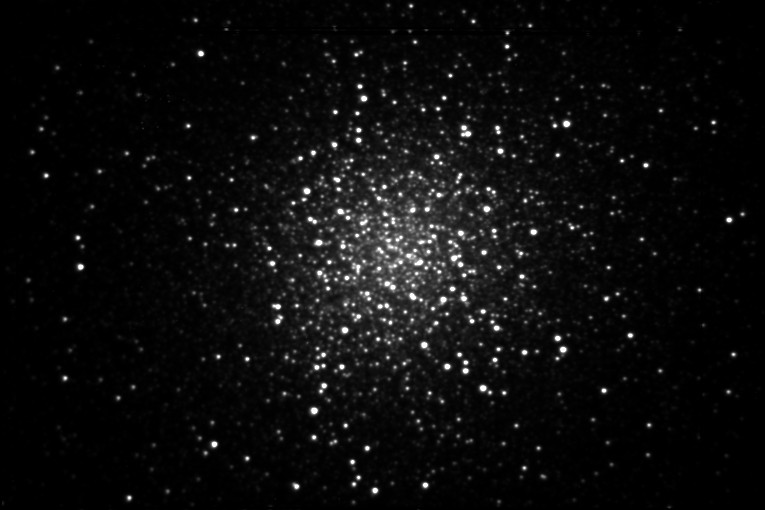RR Lyrae Stars
By Luka Novak and Ivanna Subotina
RR Lyrae stars are pulsating horizontal branch stars, with a mass of around half the Sun's. They are named after the prototype star RR in the constellation of Lyra. The horizontal branch is a stage of stellar evolution which immediately follows the red giant branch , where stars’ masses are similar to the Sun's. Horizontal branch stars are powered by helium fusion in the core via the triple-alpha reaction where fusion of two helium nuclei produces beryllium-8, which is unstable and breaks back down to two helium nuclei with a half life of 1×10-16 to 2.6×10-16 seconds, and by hydrogen fusion in a shell surrounding the core. The horizontal branch (HB) gets its name from the fact that the stars can be found on a roughly horizontal line in a color-magnitude diagram. Many horizontal branch stars pulsate and these are known as RR Lyrae stars. RR Lyrae stars shed mass prior to becoming RR Lyrae and consequently, RR Lyrae were once stars with similar or slightly less mass than the sun, around 0.8 solar masses.RR Most RR Lyrae are probably much older than our Sun. RR Lyraes are also much hotter than our Sun. RR Lyrae stars oscillates between apparent magnitudes 7 and 8. They have periods of 0.3 to 1 day making it possible to see one or more periods in a single night of observations , amplitudes of 0.3 to 2 magnitudes, and spectral types of A2 to F6.

(The Pulsation of RR Lyrae Stars, a Little Exaggerated)
Fluctuate Worse Than the Stock Market
One interesting thing about RR Lyrae stars is that their size actually fluctuates. Their surface moves radially in and out with a regular rhythm. The Stefan–Boltzmann law tells us that RR Lyrae should be brighter when they are biggest and fainter when they are smaller. As the RR Lyrae shrinks, the surface heats up; as the RR Lyrae's surface expands it cools. The speed at which RR Lyrae pulsate hints that their size cannot be changing enough to cause the change in brightness that we see. In order to do this the surface of the star would have to move in and out so fast that the star would blow it self apart. So how does the brightness change? When the change in surface temperature is taken into account, the change in brightness is explained. So when the RR Lyrae is smallest in size and hottest, then it is brightest. When the RR Lyrae is largest in size and coolest, then it is at it's faintest

Astronomer Love RR Lyrae Stars
RR Lyrae are important to astronomers because if we know the period of time it takes for an RR Lyrae to go through its cycle of brightening and dimming, then we can figure the absolute luminosity of that star. The absolute luminosity tells us how bright a star would be if it was a certain distance away from us. If we measure how bright the star appears to us and compare that to its absolute luminosity, then we can determine the distance to the star. The distance to most stars cannot be determined with the accuracy we can determine the distance to RR Lyrae.

( RR Lyrae Stars in the Middle of a Cluster)
Sources:
http://en.wikipedia.org/wiki/RR_Lyrae_variable
http://www.daviddarling.info/encyclopedia/R/RR_Lyrae_star.html
http://etacar.umn.edu/~martin/rrlyrae/rrlyrex.htm
Images:
etacar.umn.edu/~martin/rrlyrae/rrlyrex.htm
www.astro.washington.edu/.../images/rrlyrae2.gif
www.brightskies.us/NGC6205.jpg
Comments (0)
You don't have permission to comment on this page.